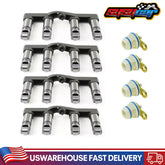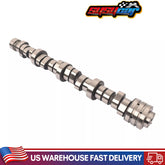Ultimate Guide to Comparing Auto Parts Prices: Save on OEM & Aftermarket Parts Today
When it comes to maintaining your vehicle without overspending, comparing auto parts prices is one of the smartest things you can do. In today’s competitive market, you have plenty of options—from online retailers to local stores—that can make a big difference in your wallet. This article will teach you how to get cost-effective vehicle maintenance by comparing auto parts costs.
Know What You’re Looking For
Before you start shopping, it’s essential to identify the exact part you need. Make sure you know your car’s make, model, and year, and if possible, have the OEM part number handy. Many websites,Many websites, such as AutoDNA and VINData, now support one-click VIN searches. If you are not sure of the part name, you can also just take a photo of the old part and use Google Lens to identify the model. now support one-click VIN searches. If you're not sure what the part is, you can just take a photo of the old part and use Google Lens to identify the model.This information ensures that you compare the same product across different retailers, whether you’re eyeing an original manufacturer part or a high-quality aftermarket alternative.
Why Compare Prices?
Many car owners are unaware that prices for the same auto part can vary significantly between sources. For example, you might find that a critical sensor or even something as simple as a set of brake pads is marked up by local dealerships and chain stores. Some industry experts point out that online platforms—like susucar or large marketplaces such as Amazon—often offer genuine parts at a fraction of the price due to lower overhead costs. This means that by spending a few extra minutes researching, you could save a substantial amount on your next repair.
What to Watch Out For in the Market
1. Retailer Markups:Traditional auto parts stores sometimes charge much higher prices because they combine convenience with the cost of maintaining a physical storefront. Online retailers typically operate with lower overhead, which often translates to better prices for you.
2. Shipping and Additional Fees:Always consider the total cost, including shipping, taxes, and any handling fees. Some sites might offer free shipping if you meet a certain order threshold, which can tip the scales in your favor.
3. Warranty and Return Policies: A lower price might seem attractive at first, but be sure to check the warranty and return policy. A solid warranty can save you money and stress down the line, especially if the part doesn’t work as expected. Of course, you don't have to worry about these at susucar. Susucar's parts meet international ISO certification standards. 30-day no-reason return and 1-year warranty allow you to buy auto parts with peace of mind.
4. Seasonal Promotions and Discounts: Keep an eye on seasonal sales or clearance events. Many retailers offer significant discounts during holidays or end-of-season events, so timing your purchase can lead to big savings.
Tips from the Field
Experienced mechanics often advise that while it’s worth paying a bit extra for essential, high-tech components like sensors and computer-controlled parts, many other items—from everyday maintenance parts to body components—can be sourced from reputable aftermarket suppliers. The key is to know when OEM is necessary and when a quality aftermarket option will do the job just as well.
For instance, you might discover that a mass airflow sensor or a set of spark plugs from an online retailer carries the same specifications as the OEM version but at a significantly lower price. In contrast, parts that affect your car’s computer system or critical safety functions might be best purchased directly from a dealer or through trusted channels, even if they cost a little more.
Staying Informed in a Changing Market
The auto parts market is dynamic. With increasing demand for cost-effective solutions, many online retailers are continuously updating their inventories and pricing strategies. Staying informed—by reading industry news, subscribing to retailer newsletters, or even following trusted mechanics on social media—can provide you with the latest insights and promotional deals.
In a market where every dollar counts, taking the time to compare prices not only ensures you get a fair deal but also empowers you to make smart choices for your vehicle’s performance and longevity. By understanding what to look for and where to shop, you can enjoy substantial savings while keeping your car in top condition.
Remember, the goal is to balance cost, quality, and peace of mind. Happy shopping and safe driving!





